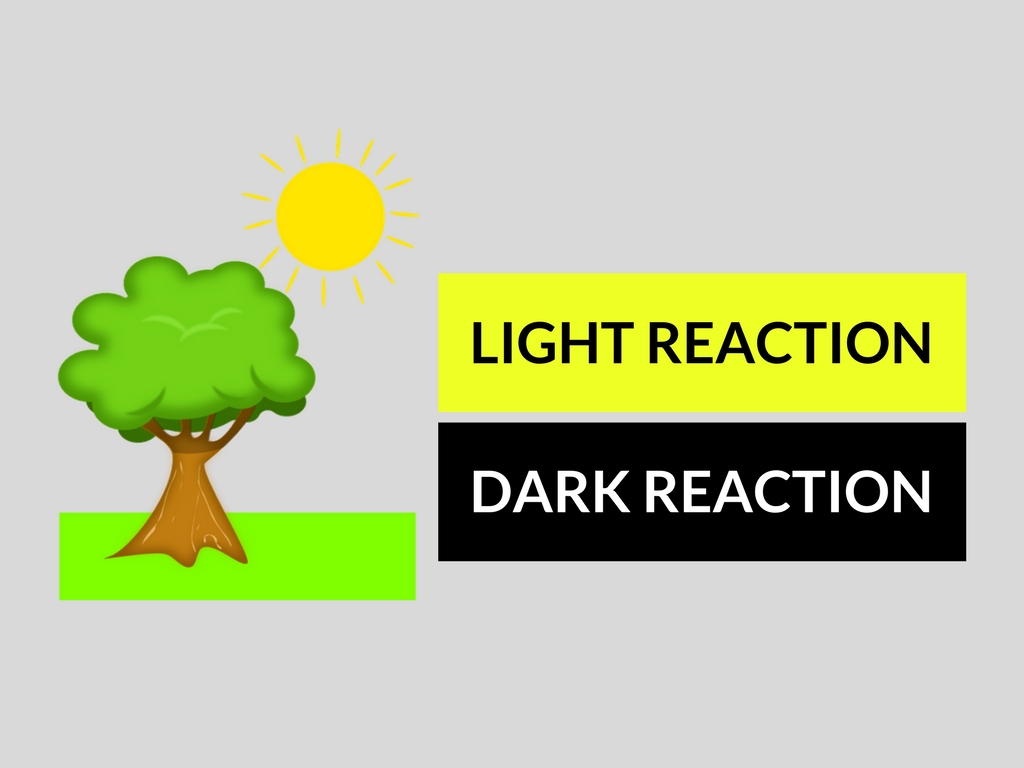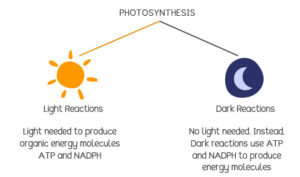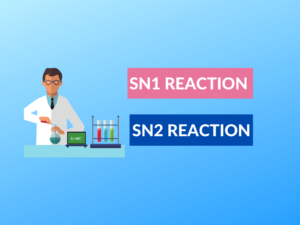The Light Reaction and Dark Reaction effect plants differently. The plants prepare their own food by the process are called photosynthesis. The photosynthesis is considered as the most important type of autotrophic nutrition. There are two stages of photosynthesis called as light reaction and dark reaction. This article focuses on communicating the difference between light reaction and a dark reaction.
LIGHT REACTION
Light reaction is the stage of photosynthesis which occurs only in the presence of sunlight and it is dependent on the light to perform its work. it takes place in the grana thylakoid membrane of the chloroplast. the grana thylakoid is responsible for trapping the solar energy for photosynthesis.
DARK REACTION
Dark reaction is the stage of photosynthesis which occurs in the presence or absence of the light. It is not dependent on light to perform its reaction. It takes place in the Stroma of the chloroplast. The stroma is responsible for enzymatic reaction to synthesize of glucose to form starch.
Difference between Light Reaction and Dark Reaction:
| LIGHT REACTION | DARK REACTION |
|---|---|
| Light reaction only takes place in the presence of light. | Dark reaction takes place with the presence or absence of sunlight. |
| DEPENDENCY | |
| Light reaction is considered as the light dependent reaction. | Dark reaction is not dependent on light. |
| ALSO CALLED | |
| Light reaction is also called as photo-chemical phase. | Dark reaction is also called as bio-synthetic phase. |
| TAKES PLACE | |
| Light reaction takes place in the grana thylakoids of the chloroplast. | Dark reaction takes place in the Stroma of the chloroplast. |
| REACTION | |
| In light reaction, H+ ions are utilized by NADP ( Nicotinamide Adenine Dinucleotide Phosphate) to form NADPH. | In dark reaction, the hydrogen of NADPH Is use it to combine with CO2. |
| END PRODUCTS | |
| The end products of light reaction are ATP (Adenosine Triphosphate) and NADPH, which are also called as assimilatiory powers. | The end product of direction is called glucose. ATP and NADPH help in the formation of glucose. |
| EFFECT` | |
| In light reaction, the water molecule splits and oxygen is released. | In dark reaction, the carbon dioxide is utilized and glucose is produces. |
CONCLUSION:
The The Light Reaction and Dark Reaction takes place in different areas of plants and different time of process. The photosynthesis is the process which occurs in the chloroplast and The light reaction occurs in the grana thylakoids and the dark reaction occurs in the stroma, which is the intermediary colorless fluid filled portion of the chloroplast. We should understand that both light reaction and dark reaction are equally important to carry on the process of photosynthesis.
For further reading about Difference between DNA and RNA click here.





